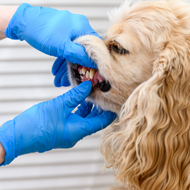Avian flu strain capable of airborne spread between mammals
The strain was responsbile for an outbreak in mink in 2022.
Researchers assessing a strain of highly pathogenic avian influenza from an outbreak on a mink farm have found that it is capable of limited airborne transmission. It is the first time a subclade 2.3.4.4b H5N1 virus has been shown to spread in this way.
Although the level of airborne transmission was below the level commonly seen in pandemic influenza viruses, the scientists have warned that the findings show the need to continue monitoring the virus due to the risk that it could evolve to cause severe disease in humans.
The strain was responsible for an outbreak in farmed mink in Spain in 2022 that led to all the mink on the farm being culled. There was evidence of mink-to-mink transmission, but at the time it was not known how it was being transmitted.
Using publicly available genetic sequences, the research team at the Pennsylvania State University (Penn State), reconstructed the virus and tested how it spread between ferrets. The researchers chose ferrets as their respiratory tracts share similarities with humans in their susceptibility to infection and transmission.
The researchers found that direct physical contact being an infected and uninfected ferret led to the virus being transmitted in 75 per cent of cases. Where there was no direct contact, but shared airspace, the virus was transmitted in 37.5 per cent of cases.
The virus from the mink farm contained a mutation, called PB2 T271A. When the researchers removed this mutation, airborne transmission was reduced.
Troy Sutton, associate professor of veterinary and biomedical sciences at Penn State, said: “Pandemic influenza viruses typically transmit via the airborne route to 75 per cent to 100 per cent of contacts within three to five days, whereas the mink virus we studied transmitted to fewer than 40 per cent of contacts after nine days.
“The transmission observed in our studies is indicative of increased pandemic potential relative to previously characterised strains of H5N1; however, the mink virus does not exhibit the same attributes as pandemic strains.
“The H5N1 strain affecting cattle also has not caused severe disease in cattle or humans, but the longer the virus circulates, and the more exposure humans have to it, the greater the chances that it will evolve to infect humans.”
The study has been published in the journal Nature Communications.
Image © Shutterstock



 The WSAVA has invited veterinary professionals to a webinar on responsible antibiotic usage in dentistry.
The WSAVA has invited veterinary professionals to a webinar on responsible antibiotic usage in dentistry.